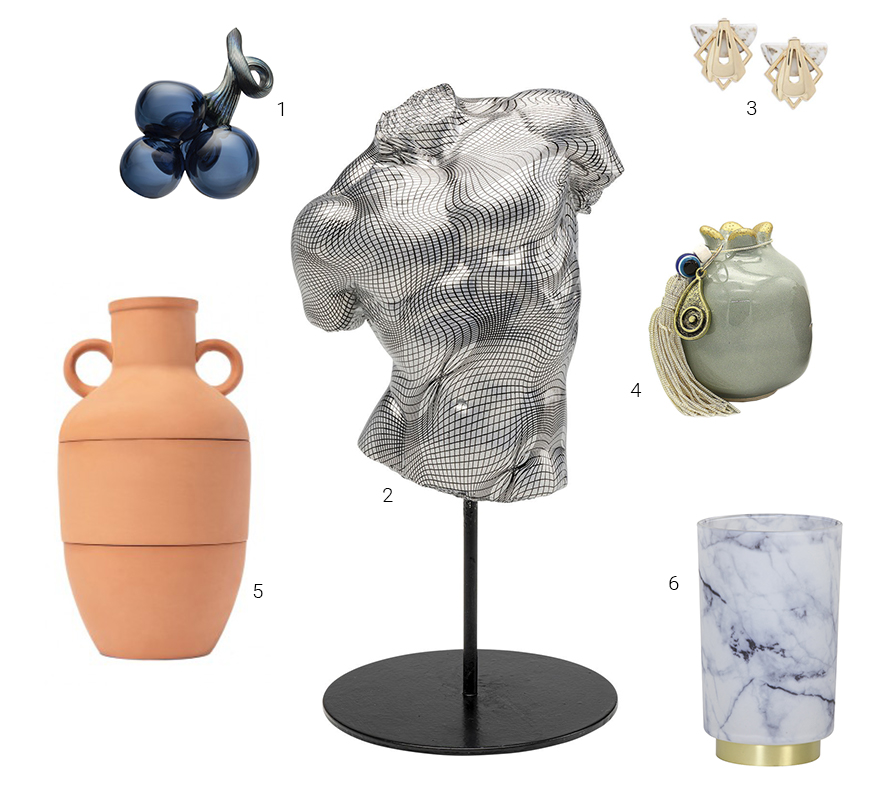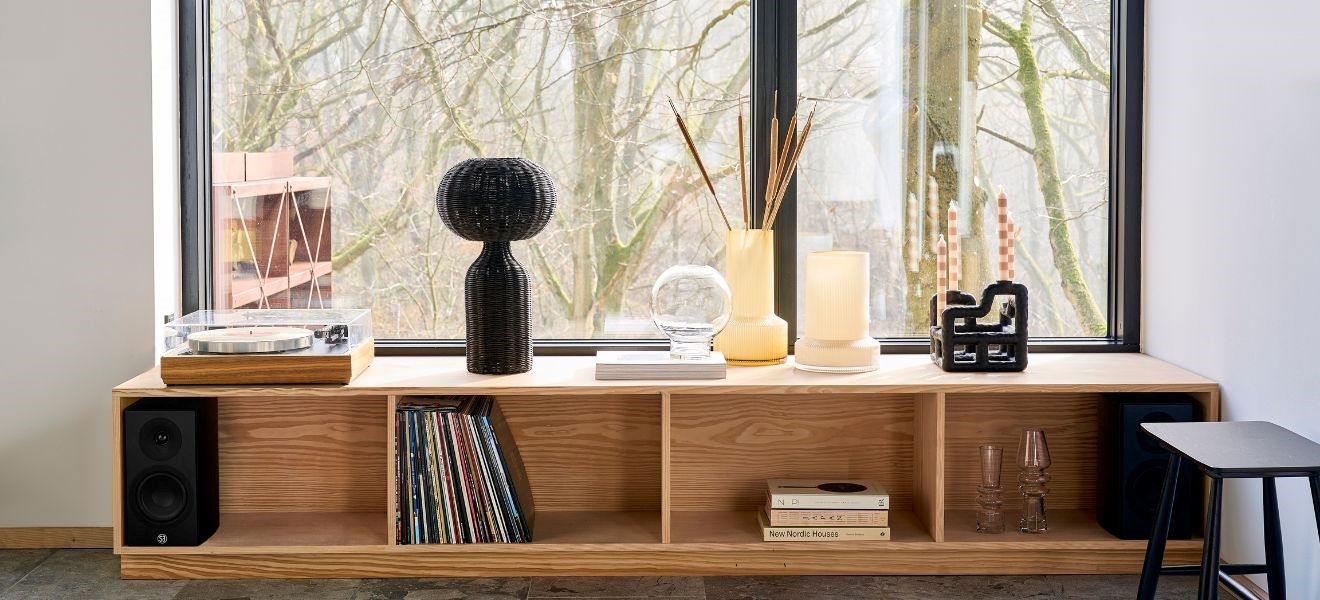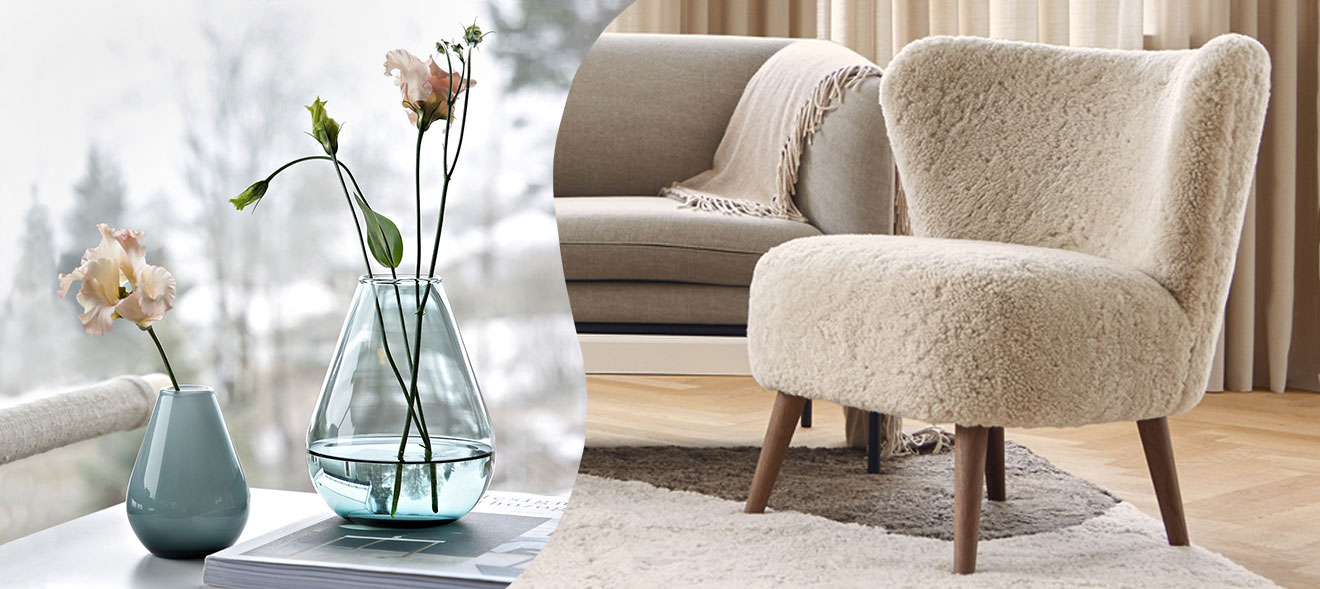Restrained yet dramatic, peaceful yet exciting, contemporary yet timeless. Modern Greek style blends patterns from antiquity, furniture from the Mediterranean and Scandinavian minimalism to create a reflection of international styles and past eras.
With its crystal-clear sea, stunning nature and friendly people, Greece attracts countless romantics and adventurers every year. But the country has much more to offer than simply sun, summer and lifestyle. For thousands of years, Greek architecture, art and design have been important pacesetters for world culture. In recent times, Greece has embraced modernity and Modern Greek style has arrived on the world stage – and not just in musicals such as Mamma Mia. With its reduced aesthetics, it combines the charm of the old world with modern simplicity and transforms rooms into spaces full of warmth and elegance. Its effects are also seen in fashion – sandals, bracelets and blankets celebrate the lightness of the Mediterranean with no need for seashells or driftwood.

The right balance of old and new
Then as now, patterns continue to play an important role in Greek design. One of the key patterns used since Neolithic times has always been the meander, a decorative border constructed from a continuous line. In Greek antiquity, it stood for the attainment of eternity through reproduction and the eternally renewing energy of the cosmos. In former times it was often found as an architectural relief or frieze, or in the borders of garments. The meander is a popular feature of Modern Greek style because of its timeless character – and because its dimensions can be adjusted to suit the available space. The meander strikes the right balance between decorative and simple, antique and modern, male and female. Today, it can be found in many modified forms on bathroom carpets, baskets and vases such as Model No. 76 by Danish ceramic artist Eva Stæhr-Nielsen. She designed the vase in the middle of the last century as a gift for stove builder Frank Edvard Jensen. Today the vase is manufactured by Spring Copenhagen.

Modern Greek design celebrates the harmonious combination of the old and the new. A good example of this is the Ekies All Senses Hotel in Vourvourou. Entrepreneur Alexandra Efstathiadou spent eleven years transforming the resort she used to visit as a child into an eco-retreat that fuses tradition with contemporary designs by Philippe Starck and Achille Castiglioni.


The Athenswas Hotel in Athens also celebrates the inherent beauty of natural materials such as Greek marble and walnut, and makes reference to Greek history, for instance with photographs of sculptures from the National Archaeological Museum. The simple aesthetics of the Euphoria Spa created by Deca Architecture in the Greek Peloponnese are particularly impressive.


Amphorae, sculptures and statues
Small accessories and decorative objects – amphorae, statues and sculptures – are an integral part of Modern Greek style and mix well with modern furniture. They come mostly in natural colours or celebrate their material, whether terracotta, rattan or marble. Motifs from nature, particularly fruit, are frequently used for ornamentation. Even today the most popular motifs often refer back to antiquity – for example, the sculpture of a pomegranate, commonly known as the ‘fruit of the gods’, or grapes that remind us of Bacchus, the god of wine. Finnish design pioneer Oiva Toikka has taken up the mythic motif and interpreted it imaginatively in a sophisticated piece of glass artwork that is now manufactured by Iittala.

Organic forms, particularly physical ones, have always played a major role in Greek culture. It is hardly surprising then that the classical ideal of the human body was set in stone in Greek sculpture in the fifth century BC. Since then it has been one of the most frequently referenced – and copied – styles in art history. Bodies are often portrayed in the form of a torso: sculptural representations of the human body without limbs, which are clearly rooted in Greek antiquity. In terms of their design, they range from faithful reproductions, as in the Kersten Ancient Times collection, to the semi-futuristic, as in the Kare sculpture of the classic form that is cast in polyresin and covered with a grid. The reference, however, remains obvious.



Mediterranean style with a new sense of lightness
Modern Greek style mixes traditional Greek objects with designs from the Mediterranean, such as classic Moroccan stools and Scandinavian minimalism, such as a wine rack from Sweden. Mediterranean design is combined with a new sense of lightness; it appears less opulent and ornamental, more human and natural – without being simply a pastiche of the past. Minimalism is closely interwoven with Greek philosophy and its roots are ascribed to the philosopher Diogenes. Diogenes was of the opinion that a simple life was necessary for virtue; he allegedly lived in a large ceramic wine jar. To this day, the ancient proverb ‘métron áriston’ (English: ‘moderation is best’) still holds true in Greece. Sometimes, though, a touch of grandeur is also allowed, for example in the cement tiles of Via, which decorated the chocolaterie in the movie Chocolat.


Then, as now, Greek design is successful because it understands proportion, balance and scale. One of the leading exponents is Athens-based designer Marilyn Katsaris. Her creations range from private homes to yachts and shops and are intended to “have a positive effect on the lives of her clients” – with a balance of colours, textures and lighting moods. Design that offers a restrained sense of lightness.
A more rustic version of the Modern Greek style is reflected in the Omonia restaurant – a traditional restaurant that has had its home in Frankfurt’s Nordend district for 35 years. It is designed in the style of a modern taverna and serves classic Greek dishes. The interior is bright with an eclectic mix of traditional and contemporary furnishings, Greek paintings and stills from the movie Zorba the Greek. The Mediterranean charm also goes down well with the locals – they affectionately call the Omonia the ‘neighbourhood’s living room’.


Title: Euphoria Retreat in Mystras, Greece, © Giorgos Sfakianakis Photography










